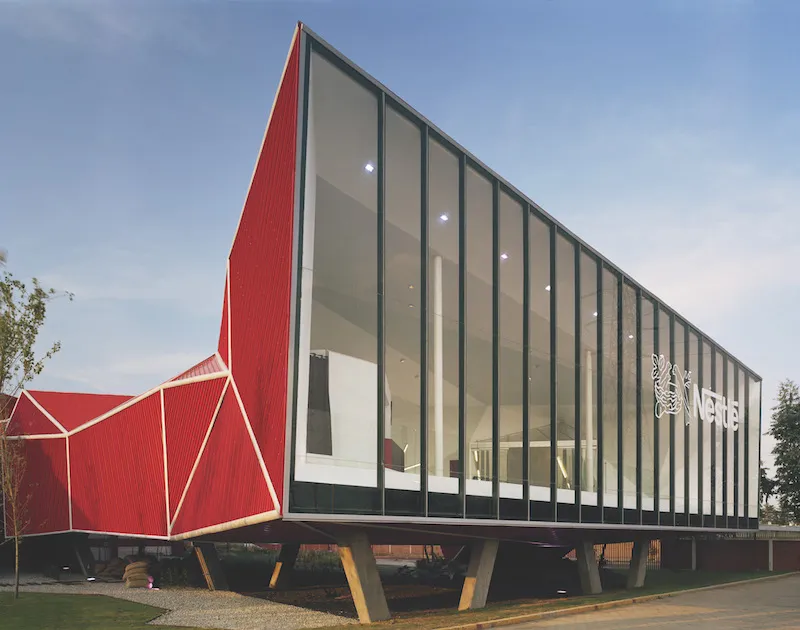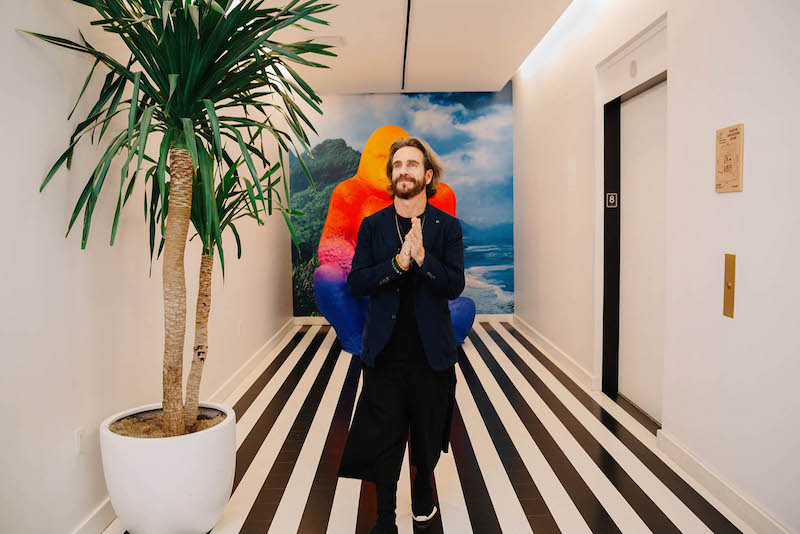Michel Rojkind is constantly looking to push boundaries. Over the past 15 years, his Mexico City firm, Rojkind Arquitectos, has earned a reputation for stylistically diverse projects that blend pragmatism and community engagement with adventurous forms and often inventive facades.
It’s his outside-the-box mentality and collaborative spirit that helped land Rojkind his new post as The We Company’s senior VP of architecture, where he is tasked with heading up a growing number of large-scale building projects while also helping elevate its standing as a design-world thought leader. Rojkind is just the latest high-profile design talent hired by the company as cofounders Adam Neumann and Miguel McKelvey continue to push in new business directions, including an expanded real estate portfolio overseen by the recently launched ARK division, a private real estate investment arm.
Bjarke Ingels, who joined The We Company in an advisory role of chief architect a year ago, was instrumental in recruiting Rojkind. The two are friends and occasional collaborators, and they’ll be working closely together on company projects.
For Rojkind, operating within a corporate structure is a completely foreign—but welcome—challenge. “I’ve never worked for anybody in my life,” he says.
The first announced project Rojkind will lead is also his first building in the U.S.: a 200,000-square-foot development to be constructed in Bentonville, Arkansas, featuring coworking spaces, shops, and other components. Though few details have been released, the idea is “to do a building that is born from Bentonville,” says Rojkind. “We don’t want to come in and impose but instead say, ‘Let’s sit down, let’s see, let’s look at how you guys live.’ We have to propose architecture that adds value to communities, gives something in return.”

A similar approach and spirit defines most of Rojkind’s best-known work, such as his 2007 Nestlé Chocolate Museum in Toluca, outside Mexico City—a project that took less than six months to complete and brought him global recognition. Composed of twisting, folded origami-like spaces clad in scarlet-hued corrugated metal, the structure serves as a dynamic public gateway to Nestlé’s factory complex and quickly became a popular destination for families and schoolkids. More recently, his two-year-old Foro Boca concert hall, a brutalist cluster of windowless concrete volumes perched on a previously dilapidated waterfront in Boca del Río, Mexico, is not only a defining landmark for the town but a vibrant hub for diverse cultural programming that has spurred revitalization in the surrounding area.
“It feels like what I’ve been doing—creating architecture that is a catalyst for community—has been training for me to come to WeWork, a company that has always been about making environments where people can thrive,” says Rojkind, whose firm will continue to operate separately. “At WeWork, I can do it on a bigger level. I can have more impact. I don’t care if my name is there or not.”
Coming from a successful, ambitious architect like Rojkind, that last statement might seem unexpected. It certainly contrasts with the cult of individual creative genius that has long prevailed in the architecture field. But very little about Rojkind or his career path can be called conventional.

The youngest of four kids, he grew up mostly in Mexico City, though the family spent a few years in the New York City area in the seventies, when his father, a prominent liver specialist, took a position at the Albert Einstein College of Medicine. Rojkind believes he suffered from ADD (though he was never diagnosed), and says he channeled his hyperactivity in part by taking up the drums as a teenager—which, as it happened, would lead to a successful music career.
In the late-eighties and early-nineties, Rojkind recorded four albums and toured extensively with the popular Mexican band Aleks Syntek y la Gente Normal while simultaneously taking architecture classes at the Universidad Iberoamericana in Mexico City. “A lot of my teachers told me, ‘I see your videos on MTV. Do you really think you’re going to be an architect?’” he recounts. “And I would say, ‘Don’t judge me because I’m in a band. Judge my capacity to do architecture and engage in projects in the right way.’”
Rojkind got his degree in 1994; within a few years, as he was feeling alienated by changes in the music business and Aleks Syntek’s shift toward more of a pop sensibility, he got his first commission to design a home. He decided to commit to architecture.
Particularly at first, some people in Mexico who knew him as a drummer resisted taking him seriously as an architect. To support his practice early on, he did renderings for other architects. Two prominent figures in Mexico’s architecture scene, Isaac Broid and Miquel Adrià, admired Rojkind’s work enough to bring him into a partnership that lasted three years. That period proved pivotal, as Rojkind found himself “sitting down with all of these bigger architects,” he says. “I was part of their conversations.”
In 2002, eager to push in new directions, Rojkind went back out on his own and founded Rojkind Arquitectos. Among his initial breakthrough projects was his 2003 PR34 House, a boldly contemporary extension to a 1960s residence that consisted of two interlocking, glass-fronted volumes wrapped in smooth steel shells with rounded edges and painted an electric red. The new headquarters he devised for the medical supplies company Falcon that same year featured a translucent exterior of asymmetrically gridded yellow glass, with openings at irregular intervals, revealing interior plantings and blurring distinctions between indoors and out. Both projects featured elements that would become Rojkind signatures: coupling digital design with local craftsmanship, and using facades to create visual dynamism and break up rigid conventional geometries.
“When people started seeing what I was designing, they were like, ‘Wow, we want to interview you because you have a different profile and see things differently from most architects,’” he says. Being in the music world and touring with his band opened his eyes to new cultures and communities and the role that architecture plays in the social experience of places.

It also taught him a lot about collaboration. While architects are traditionally reluctant to share work and ideas, it’s “super natural” for musicians, Rojkind says, to get together and “jam.” He says his mind-set has always been “I don’t want to be this architect who is siloed somewhere and doesn’t speak to anybody. The more people there are sitting around the table, the more interesting the projects get.”
Indeed, many projects in Rojkind’s portfolio have dual credits: the Tori Tori sushi restaurants he created with designer Hector Esrawe; the Cineteca Nacional and Liverpool department store projects he did with Gerardo Salinas, who worked as a partner in Rojkind Arquitectos between 2010 and 2014, helping to guide the firm through a period of rapid growth.
At WeWork, Rojkind says he expects collaboration to remain central to the company’s architectural projects. “We want to create a design platform where we can connect with different colleagues, collaborate, and have amazing buildings,” he says.
Collaboration and exchange are, after all, at the heart of the WeWork ethos. The idea is that “WeWork becomes this lab of culture,” says Rojkind. “The conversations and connections people make have the most impact.”
What’s especially intriguing to Rojkind is the ability to gather, assess, and apply members’ feedback to future designs. “We’re paying attention to what people want and learning from that,” he says. He wants to use that information to rethink what buildings should be in the future.
Eager to push the next boundary, Rojkind isn’t limiting his scope to the ARK-funded projects currently in development. “I’m not the type of person who can stand still at his desk and wait for stuff,” Rojkind says. “I’m going to figure out how to get clients and start working on projects now.”







